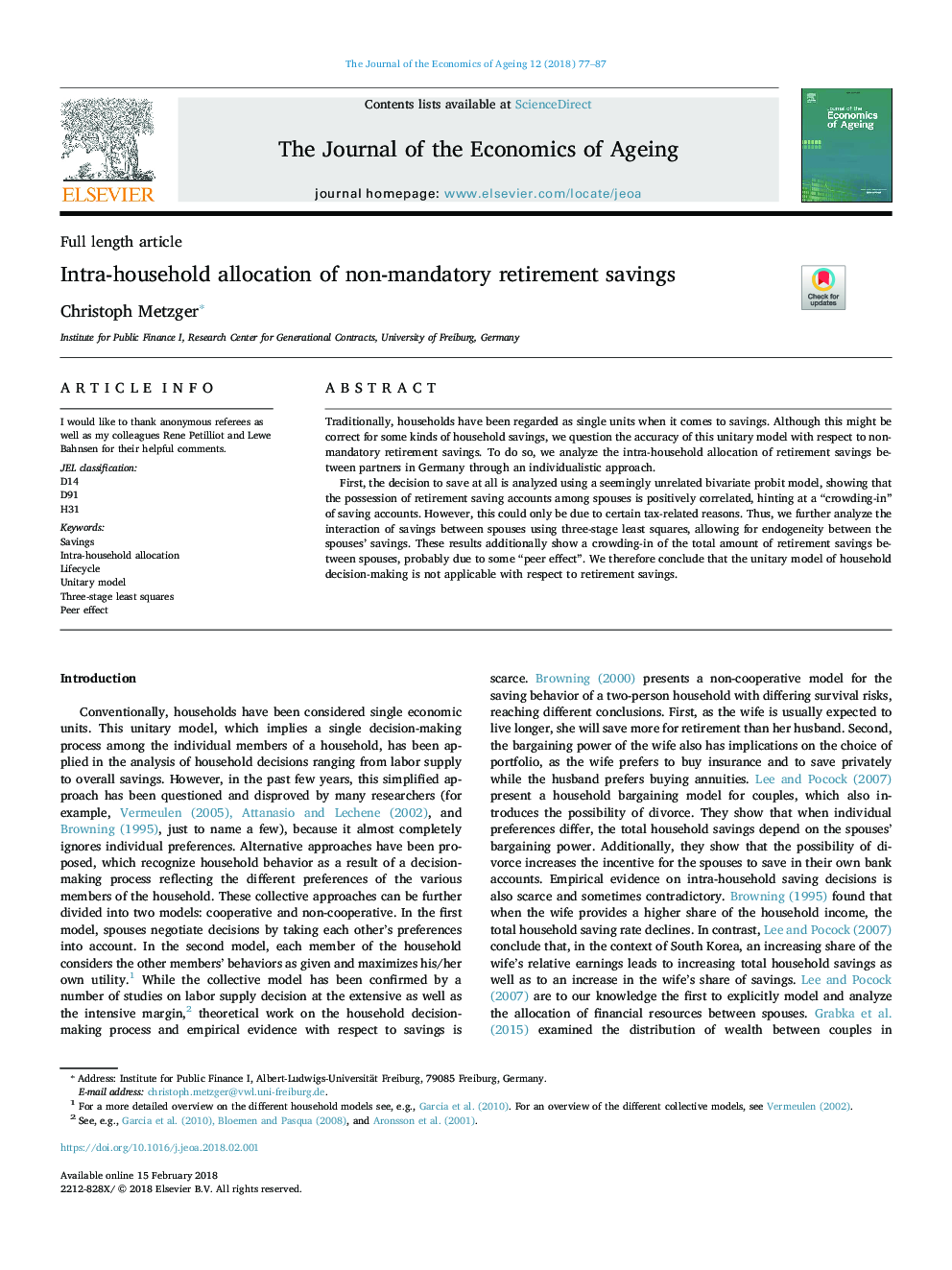| Article ID | Journal | Published Year | Pages | File Type |
|---|---|---|---|---|
| 7359923 | The Journal of the Economics of Ageing | 2018 | 11 Pages |
Abstract
First, the decision to save at all is analyzed using a seemingly unrelated bivariate probit model, showing that the possession of retirement saving accounts among spouses is positively correlated, hinting at a “crowding-in” of saving accounts. However, this could only be due to certain tax-related reasons. Thus, we further analyze the interaction of savings between spouses using three-stage least squares, allowing for endogeneity between the spouses' savings. These results additionally show a crowding-in of the total amount of retirement savings between spouses, probably due to some “peer effect”. We therefore conclude that the unitary model of household decision-making is not applicable with respect to retirement savings.
Related Topics
Social Sciences and Humanities
Economics, Econometrics and Finance
Economics and Econometrics
Authors
Christoph Metzger,
